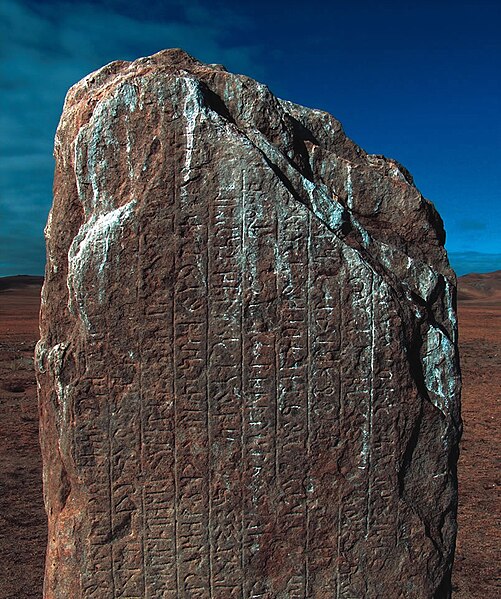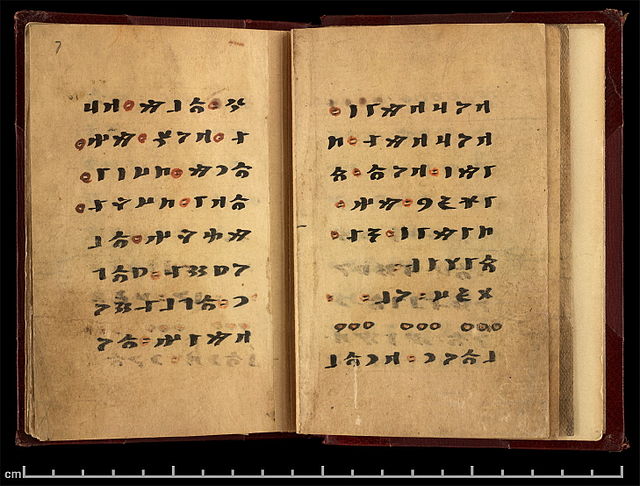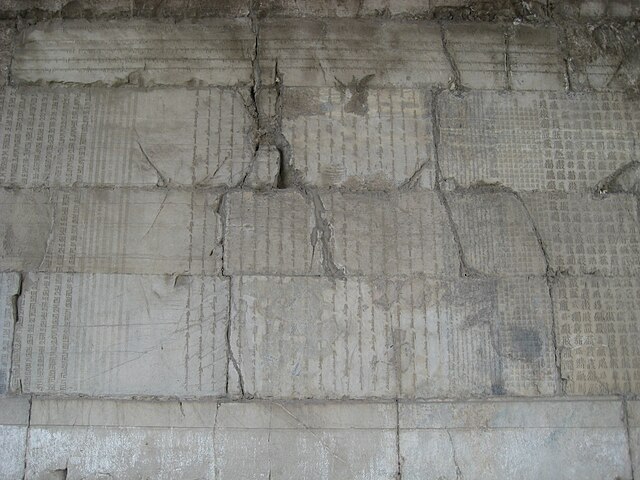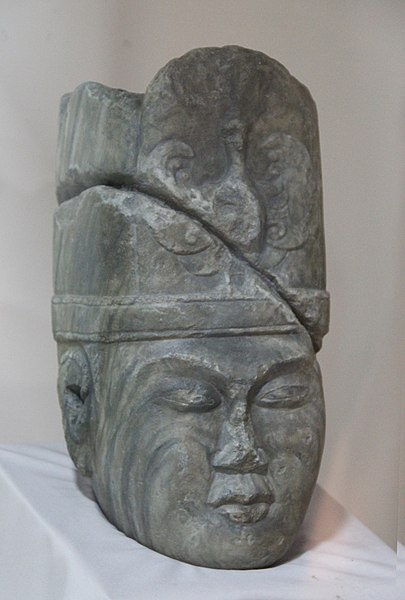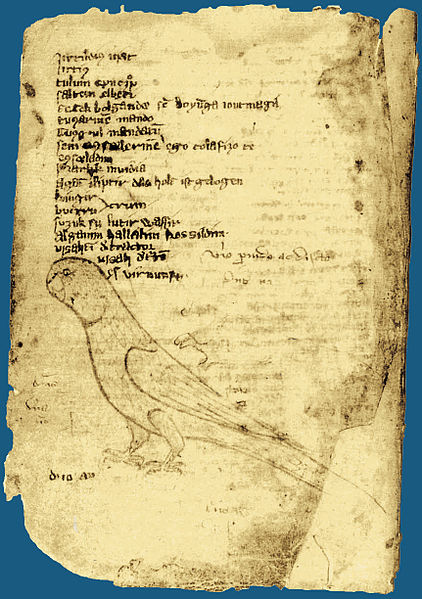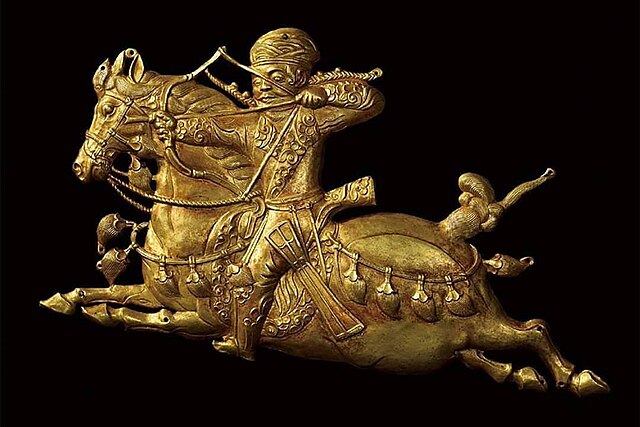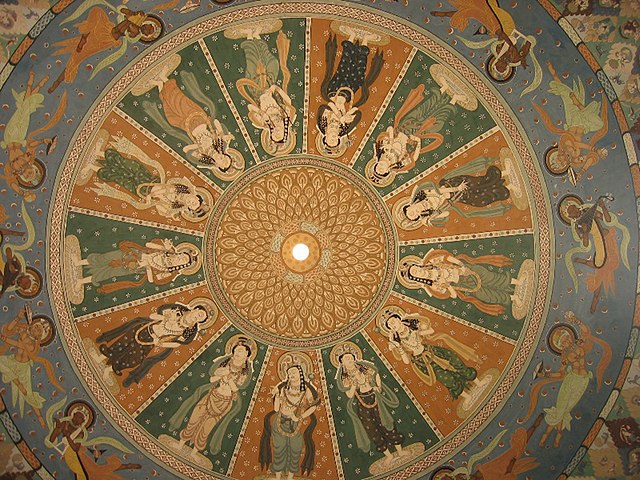The Turkic languages are a language family of more than 35 documented languages, spoken by the Turkic peoples of Eurasia from Eastern Europe and Southern Europe to Central Asia, East Asia, North Asia (Siberia), and West Asia. The Turkic languages originated in a region of East Asia spanning from Mongolia to Northwest China, where Proto-Turkic is thought to have been spoken, from where they expanded to Central Asia and farther west during the first millennium. They are characterized as a dialect continuum.
Old Turkic Kul-chur inscription with the Old Turkic alphabet (c. 8th century). Töv Province, Mongolia
The 10th-century Irk Bitig ("Book of Divination") from Dunhuang, written in Old Uyghur language with the Orkhon script, is an important literary source for early Turko-Mongol mythology.
Yuan dynasty Buddhist inscription written in Old Uyghur language with Old Uyghur alphabet on the east wall of the Cloud Platform at Juyong Pass
The Turkic peoples are a collection of diverse ethnic groups of West, Central, East, and North Asia as well as parts of Europe, who speak Turkic languages.
Bust of Kul Tigin (AD 684–731), prince of the Second Turkic Khaganate, found in Khashaat, Arkhangai Province, Orkhon River valley. National Museum of Mongolia.
A page from "Codex Kumanicus". The Codex was designed in order to help Catholic missionaries communicate with the Kumans.
A Turkic warrior from the Göktürk period. The horse's tail is knotted in Turkic style. His hair is long, braided and his big-collared caftan and boots are Turkic clothing features.
Uyghur painting from the Bezeklik murals

